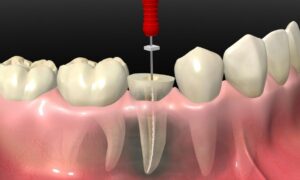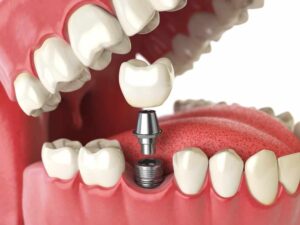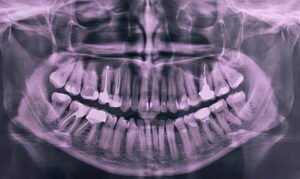Over the past few decades, waxing has quickly gained popularity among men and women. Therefore, whether you’re planning your next vacation, making preparations in readiness for the summer months or you just need a bikini-ready body, then you’re probably thinking about getting a good shave, wax, or getting rid of the body hair spread out all over your skin.
While a razor and shaving cream will certainly clear the hair, the option of visiting a wax bar in Toronto presents a much better method for hair removal. Besides removing larger amounts of body hair with greater speed than a typical shaving routine, waxing also guarantees you noticeable smoothness that lasts longer. This partly explains why millennial men and women are investing more in waxing sessions.
Whether you are considering waxing as a beginner or you’re one of the seasoned pros, below are some approved tips that will help you realize the best, most pleasant results, which everyone desires.
How to Prepare for a Waxing Appointment
1. A Skin Test is Vital Before Booking a Wax Appointment
Prior to booking a waxing appointment, you need to first carry out some critical prep work. Since some wax contains artificial ingredients, it is important that you check with a dermatologist or doctor who can help you determine whether your skin is suited for waxing. To find out how your skin reacts to wax, you should carry out a skin patch test in advance. You should wait for at least 24 hours to make sure no skin irritation occurs.
2. Tell The Waxer Everything
Once you have determined that waxing is a safe hair removal method for your skin, it is highly recommended that you inform your esthetician about any skin sensitivities or allergies you might have prior to the commencement of the waxing session. By doing so, it will be easier for the esthetician to select the appropriate wax that matches your skin type and the process will be easy on your skin.
For the ladies, scheduling waxing appointments around specific times of the month can prove helpful, especially if you consider the fact that sensitivity caused by menstruation can make the process slightly more painful than normal.
In addition, if you’re currently using topical creams, be sure to discuss it with your doctor, including any allergies you might have. Due to the hypersensitivity that occurs during the menstrual cycle, it is highly recommended that you plan your waxing session before or after a menstrual cycle.
3. Prep Your Skin Beforehand
Prepping your skin is equally as important as identifying your allergies. Exfoliate your skin to make sure the waxing can be completed without any major setbacks. Exfoliating your skin before your waxing session clears dead skin cells, thereby allowing hairs to grow over the surface.
Similarly, you should refrain from shaving before your next waxing session, as it makes the skin removal process more difficult when it really shouldn’t be. For effective waxing, at least a quarter inch of hair is needed. While you can shave or tweeze the stray hairs two days before your waxing session, allow it to grow before you visit a wax bar in Toronto.
4. The Pain Factor
While waxing is one of the most popular hair removal methods because of the pleasant results, the dreaded pain factor is unavoidable. This can tempt some people to cancel their appointments. Even though the pain is an unfortunate component of the process, there are clever ways to keep the pain threshold to the minimum. Avoid triggers such as caffeine and alcohol several days before booking a wax appointment to help with pain reduction.
Tip: Avoid caffeine, alcohol and exercise before you go in for the wax session. All these things may induce blood circulation, which makes waxing more painful.
Also, you might want to consider managing the pain using a pain reliever. The pain reliever should ideally be taken at least 40 minutes before you go in for your appointment.
5. Wax Selection
While waxing is not a one-formula-fits all solution, there are different types of waxes to choose from, with each one tackling different situations. The different kinds of waxes include everything from hard to soft wax. Thankfully, your esthetician will help you choose the most appropriate one based on your waxing requirements.
6. Visit A Wax Bar Near You
While plenty of waxing kits are now available at the local stores, an expert should ideally conduct the waxing. Estheticians undergo extensive training, thus enabling them to be certified in offering waxing services. Therefore, if you need a quick and professionally executed wax, do not hesitate to seek out professional help.
In addition, visiting a wax bar gives you peace of mind knowing the experts will complete the process correctly, while producing the best outcome. Furthermore, the experts can work on the specifically hard-to-reach areas of your body that you might not be able to reach when you resort to home waxing.
7. If You Decide To Wax from the Comfort of Your Home, Please Do It with Great Caution
If you prefer to wax from the comfort of your home, you need to do it while exercising great caution. Make sure the wax is not too hot, as this might cause discolouration and burns to your skin.
Test the wax temperature on your inner wrist and allow it to cool down if it’s too hot. In addition, when waxing the sensitive areas, such as your bikini line or underarms, you might have to wait much longer for the wax to cool down. If it feels even slightly uncomfortable on your wrist, you can bet that it will really cause a burning sensation on the sensitive spots.
8. Proper Aftercare
Proper skin care post waxing is equally as important as the prep phase. You should typically wait at least 6 weeks before you can schedule your next session, thereby making it critical to carry out proper skin care until the next visit.
Make a point of caring for your skin before your next waxing session. Daily application of serum helps with the ingrown hairs, while exfoliating keeps your skin smooth and soft. Note that moisturizing your skin between waxes is yet another vital consideration. Dry, flaky skin can potentially cause major skin discomfort during waxing; so make sure your skin is well hydrated.




